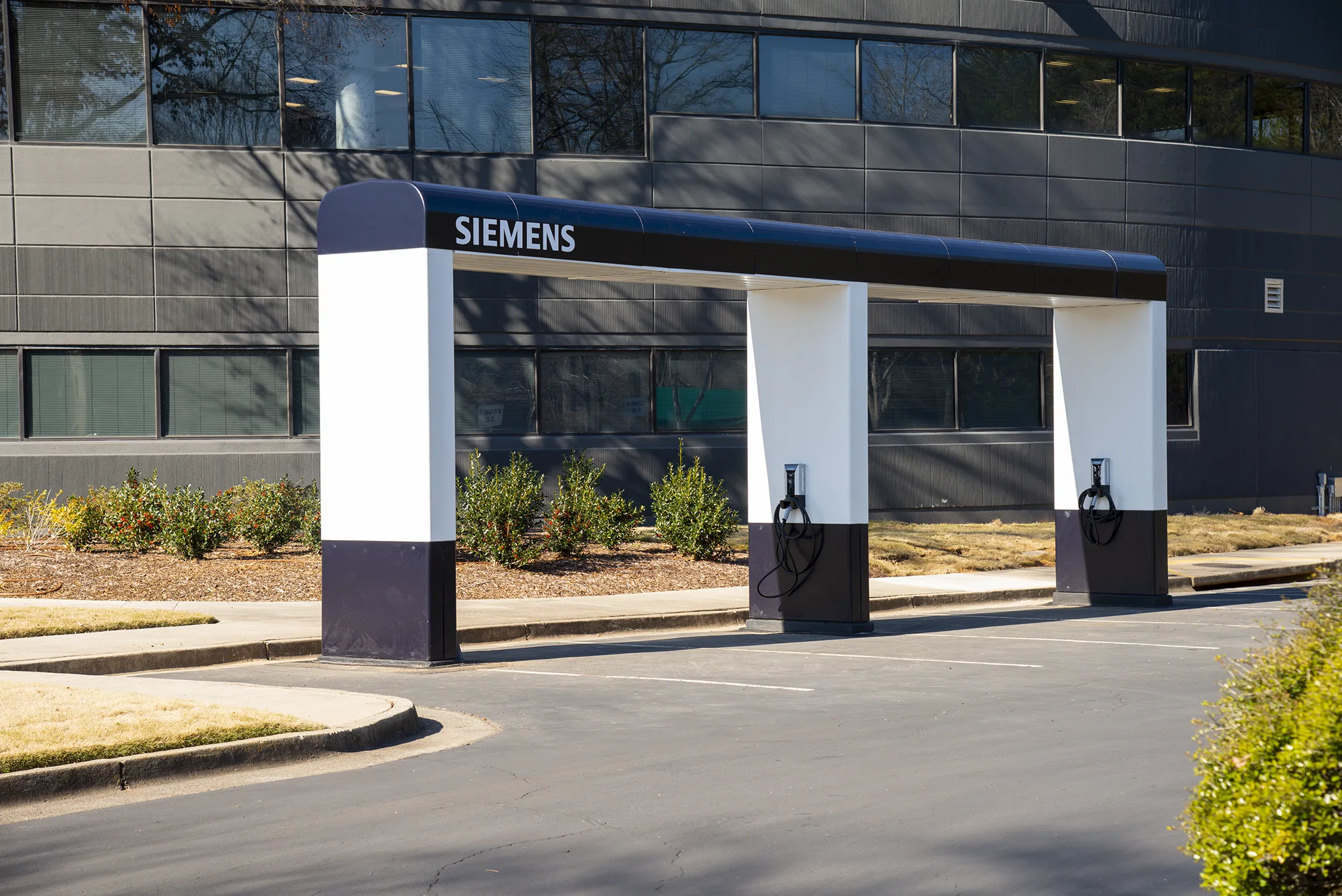
Siemens Smart Infrastructure in the US has unveiled an electric vehicle (EV) charging concept structure in Peachtree Corners that can electrify fleets at scale.
The city in the US state of Georgia is home to advanced smart city ecosystems, with smart connected technologies being developed in real-world conditions.
The new VersiCharge XL concept (UL standard) was created to electrify new or existing car parks and building structures by using a modular design created in partnership with green construction technology company Nexii Building Solutions.
Siemens says the EV charging system houses all the necessary electrical infrastructure components that power EV chargers in an above-ground, enclosed, and low carbon structure.
According to Siemens, the above ground design requires minimal disruption to existing car parks by eliminating costly, time-consuming, and substantial civics works and reduces on-site construction waste and environmental impact.
Markus Mildner, CEO of eMobility at Siemens Smart Infrastructure, says: “The massive growth of electric mobility requires an easy and rapid expansion of a reliable and sustainable charging infrastructure. This specific concept shows how Siemens and its partners are working on new, innovative ideas to help support this growth in the US market.”
The VersiCharge XL concept (UL standard) leverages power distribution technologies used indoors at locations like data centres and industrial facilities and elevates them in a weather-resistant enclosure, the company adds.
The system is expected to charge large numbers of EVs in outdoor environments ranging from small office building parking lots to last mile logistic hubs, and up to a stadium car park.
The prototype was created using Nexii’s building material Nexiite, which has comparable properties to concrete, as the vertical structure to support Siemens Sentron Busway systems that connect to power the EV chargers.








